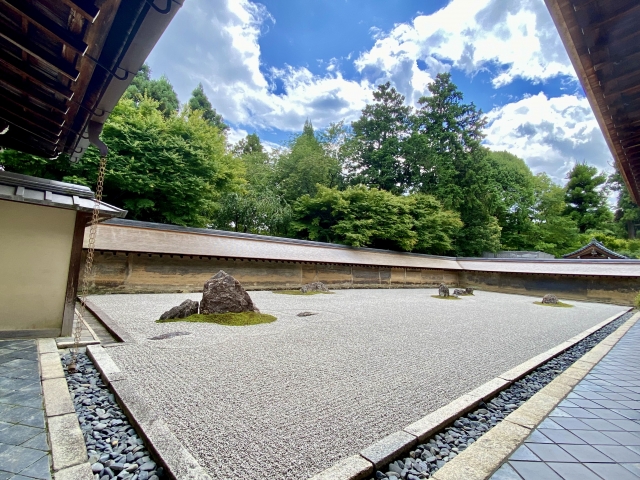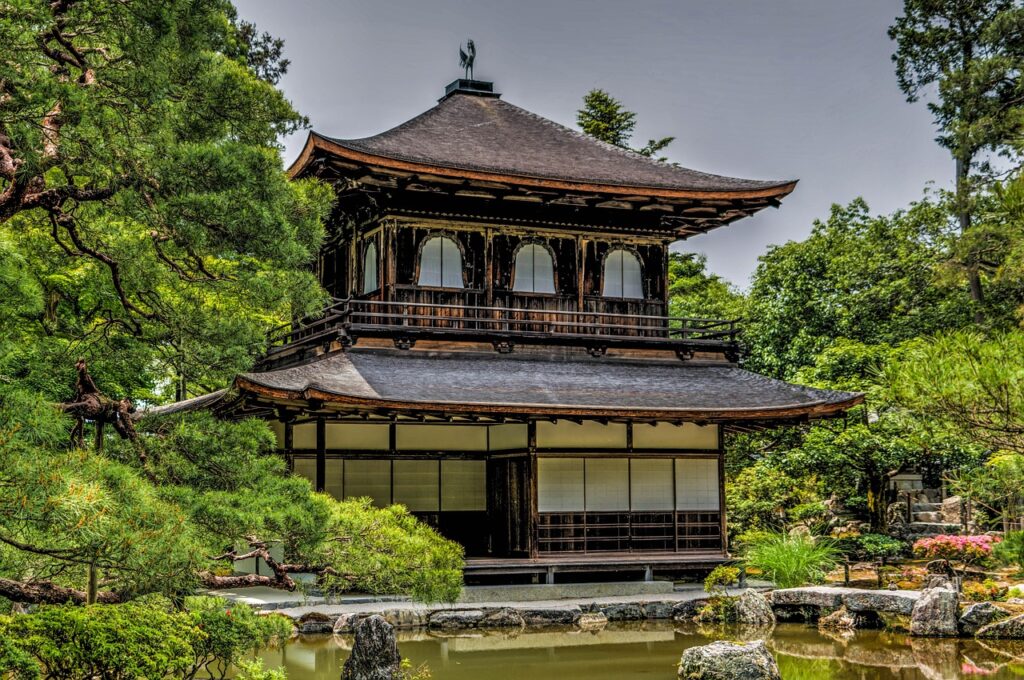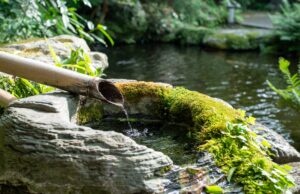JAPAN IN
ONE MINUTE 
~ What we can learn from “Wabi sabi” ~
Another good example of “Wabi sabi” is the Japanese rock garden, called Karesansui.

It’s a garden made with rocks, sand, and a few small plants.
There’s no water, but the patterns in the sand represent rivers, and the rocks represent mountains.
Even though it looks very simple and quiet, that emptiness is part of its beauty.
It shows how we can find peace and beauty in imperfection and in empty spaces.
In Europe, people often see luxury and perfection as beautiful,
but “Wabi sabi” is a completely different way of thinking!
Hmm…that sounds tricky, but kind of cool!
Look at these photos too!


Left one is Ginkakuji, or the Silver Pavilion, in Kyoto.
Unlike Kinkakuji, the Golden Pavilion, it’s not shiny or flashy.
Its wooden building has become weathered over time, and the garden is calm and simple.
But that aged, quiet beauty is exactly what “Wabi sabi” is about,
appreciating things that are old, imperfect, and natural.
I remember visiting Ginkakuji ! At first, I expected it to sparkle like Kinkakuji, so I was surprised.
But after walking through the garden, I felt a peaceful, gentle atmosphere.
Personally, I don’t always feel happy about getting older.
But when I remember “Wabi sabi“, it helps me stay positive.
Aging isn’t something to fear. It’s a part of life’s natural beauty.
I want to live each day appreciating that.
In Sweden, we are pretty good at using things for a long time.
Secondhand stuff is totally normal, and people often renovate houses to keep living in them for years.
So I feel like this mindset actually fits really well with the idea of “Wabi sabi“!
I wish I could be a cat who understands “Wabi sabi“!
Summary
“Wabi sabi” is a Japanese way of seeing beauty in imperfection, impermanence, and the natural aging of things, teaching us to appreciate simplicity and the fleeting moments of life.



